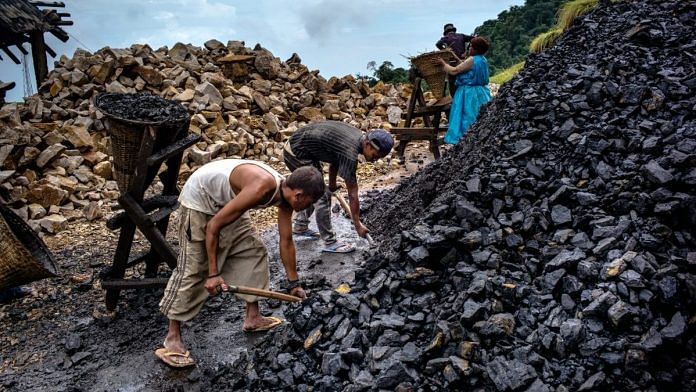New Delhi: The Ministry of Environment, Forests and Climate Change (MoEFCC) has said the central government need not provide forest clearance for “supplementary linear mining projects,” such as the installation of conveyor belts and construction of transportation infrastructure for minerals. Instead, this clearance can be granted by regional offices.
In a letter addressed to all states on 23 August, the MoEFCC said “supplementary linear projects linked to mining that are conceived after the start of the original mining, should be considered as a standalone linear project and decisions on according approval for those shall be made at the Regional Empowered Committee/Integrated Regional Office concerned as per provisions provided in the Forest (Conservation) Rules, 2003.”
In other words, clearances required for additional roads, railway lines, and conveyor belts attached to mining projects need not come from the central government, which is in charge of granting mining projects with forest clearances under the Forest (Conservation) Act.
To ensure there is no “misuse” of this provision, the MoEFCC in its letter said that state governments and regional offices must ensure that there are “cogent and convincing reasons/justifications,” for the introduction of new infrastructure to the mining projects. User agencies seeking such clearances must do so “under inevitable circumstance only [sic],” and existing road, rail, and conveyor belt routes should be “strengthened to minimise forest / tree cover loss.”
The letter also states that future proposals for forest clearance, including greenfield and brown field expansions, “shall have an additional column for the project proponent to certify that they have critically examined the mineral extraction pathways and have found them to be adequate, and that no new extraction path outside mining area shall be proposed in the next five years.”
The MoEFCC’s guidelines are based on the recommendations of the Forest Advisory Committee (FAC), which, in a meeting earlier this year, stated that these measures were to “ensure that the sanctity of such delegation is maintained.”
Also read: India’s coal conundrum: how to loosen its grip while not abandoning millions who depend on it
The FAC’s reasoning
Proposed mining plans typically include plans for excavation and transportation of coal and other minerals, which are considered by the central government and Forest Advisory Committee (FAC) when granting forest clearance to such projects.
In a meeting held on 29 April this year, the FAC said that although mining plans are comprehensive enough, “at times it may be the case that there is a need for creating another extraction path after original project has been approved and mining has started due to a new exigency.”
Linear projects proposing more carbon-friendly technologies to transport mined materials “should be given preference,” the FAC said, recommending that the MoEFCC incentivises eco-friendly transport “from the very beginning,” of mining projects.
Drawing from an amendment to the Forest Conservation Rules, which states that “linear” projects can be evaluated by regional empowered committees, the FAC said that “if there is a supplementary proposal for a linear infrastructure, the same should be dealt by IRO/ REC even if its utility pertains to a mining project which was dealt by MoEF&CC (HQ)/ FAC.”
This supersedes the FAC’s guidelines made in 2019, which said the same office granting forest clearance for the mining project should also look into clearances for linear projects.
“The FAC observed that any delegation should always be complete in itself and it should not be ridden with conditions, otherwise decision making becomes delayed and difficult,” the FAC said in its reasoning.
Concerns about ‘end’ use
Environmental governance experts have raised concerns about how this delegation may play out on the ground.
“The ministry based on the FAC’s advice has emphasised that user agencies must provide a justification for the need for more forests in case supplementary linear projects are to be constructed. However, this is more in the form of a request than directions that insist on minimising such instances or create deterrence against misuse. It will be entirely upto to the discretion of the regional committees to review the justification which most often than not will rely on the needs of an already functional mine. There is little room for rejecting the approvals,” Kanchi Kohli, a senior researcher with the Centre for Policy Research, specialising in environmental governance, told ThePrint.
“Regardless of who is giving the approval, since mining companies are no longer required to specify end use, their end use can keep changing as they make more requests for supplementary infrastructure,” she added.
Also read: How Modi govt’s changes to mining law could unshackle the sector in India



